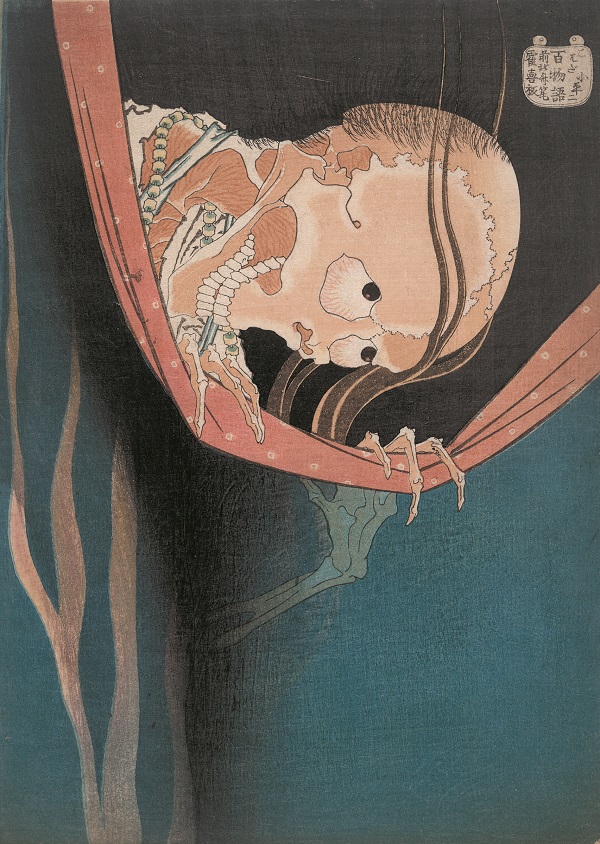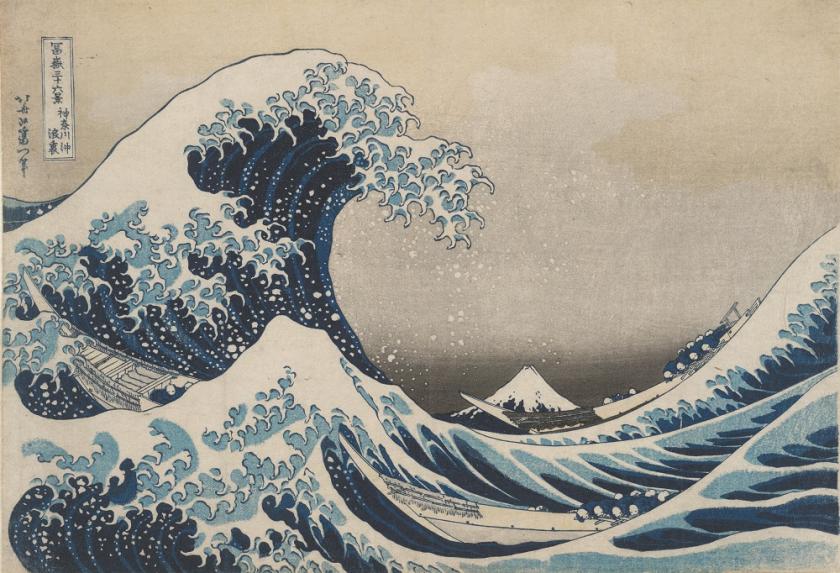With its striking design, characteristically restricted palette and fluent use of line, Hokusai’s The Great Wave, 1831, is one of the world’s most recognisable images, encapsulating western ideas about Japanese art. First seen outside Japan in the 1880s, Van Gogh was one of the first Europeans to really engage with the print, and he was one of a number of 19th-century artists who tried to incorporate aspects of Japanese style into their work.
For all that, The Great Wave is the result of Hokusai’s longstanding interest in European art, its use of perspective and the pigment Prussian Blue indicating his familiarity with western practice. This, says Tim Clark, curator of the British Museum’s latest exhibition, may well explain the print’s appeal outside Japan, as “people saw something embedded in the image that they half recognised.”
Despite being made when Hokusai was in his early seventies, The Great Wave (main picture) really serves as the starting point for this landmark exhibition examining the last 30 years of the artist’s life. Part of a series of Thirty-Six Views of Mount Fuji, it shows Hokusai reaching a point of technical and artistic achievement best appreciated by looking at his earlier attempts to express the power and motion of the sea. Where previous attempts look somewhat lifeless and static, The Great Wave captures perfectly the moment before a huge wave crashes down onto the fragile boat beneath.
 The print’s real subject of course is Mount Fuji, seen here in the distance, its snowy peak echoed in the frothing sea. In the Edo period (1615-1868) Fuji was treated as a place of devotion and Hokusai attached great religious significance to the place, his later years dominated by his own sense of a spiritual quest, which was inseparable from his artistic endeavours. According to Tim Clark, “Hokusai’s fundamental position was that the older he got, the greater he would become as an artist”, and it was this belief that made him determined to live as long as he could.
The print’s real subject of course is Mount Fuji, seen here in the distance, its snowy peak echoed in the frothing sea. In the Edo period (1615-1868) Fuji was treated as a place of devotion and Hokusai attached great religious significance to the place, his later years dominated by his own sense of a spiritual quest, which was inseparable from his artistic endeavours. According to Tim Clark, “Hokusai’s fundamental position was that the older he got, the greater he would become as an artist”, and it was this belief that made him determined to live as long as he could.
While he had trained initially with the Floating World painters, who famously depicted the decadence of the city of Edo, his later work is concerned with daily life and his observations of everyday activities and the natural world merge seamlessly with mythical, spiritual and religious subjects.
In the mystical power of Mount Fuji, and Hokusai’s illustrations of his own visions, such as the curious One Hundred Bridges at a Glance, c 1823, there is a keen sense of the thin veil between earthly and spiritual realms, his print series One Hundred Ghost Tales, c.1833, presenting remarkably original and terrifying depictions of ghosts and ghouls (pictured above right). In his own preoccupations with spiritual fulfilment, the exhibition evokes Hokusai himself as an otherworldly figure, whose concerns were only half rooted in the here and now. His relationship with his artist daughter Eijo is a compelling aspect of the narrative, and while very few of her works survive to be included in the show, she is a powerful presence throughout. Living together in the last decades of Hokusai’s life they must have made an eccentric pair, their peripatetic existence verging on the squalid as they dedicated themselves to nothing but painting.
- Hokusai: Beyond the Great Wave at the British Museum until 13 August 2017
- The exhibition will close from 3-6 July to allow some exhibits to be changed for conservation reasons
- Read more visual arts coverage on theartsdesk
Click on the thumbnails below to see some highlights from the exhibition









![SEX MONEY RACE RELIGION [2016] by Gilbert and George. Installation shot of Gilbert & George 21ST CENTURY PICTURES Hayward Gallery](/sites/default/files/styles/thumbnail_125_x_125_/public/mastimages/Gilbert%20%26%20George_%2021ST%20CENTURY%20PICTURES.%20SEX%20MONEY%20RACE%20RELIGION%20%5B2016%5D.%20Photo_%20Mark%20Blower.%20Courtesy%20of%20the%20Gilbert%20%26%20George%20and%20the%20Hayward%20Gallery._0.jpg?itok=3oW-Y84i)





Add comment